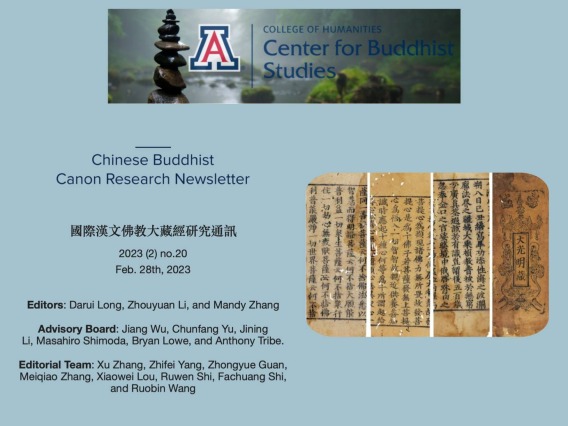
Please visit "cbs.arizona.edu/buddhist-canon-studies" for a PDF version.
Because of the different setups in your email clients, the fonts, images, and layouts in this newsletter may look different. We suggest you click the link "View this email in your browser" on the top of this message to access the HTML version. As we prepare this newsletter, our community is facing unprecedented challenges. We are grateful that you have continued to support our research Center during the pandemic. If you are willing to support the Chinese Buddhist canon research or sponsor the publication of this newsletter, please consider DONATING NOW.
To our friends near and far, we hope that you stay safe and healthy and that the Buddhist teachings and resources we share can bring some measure of comfort. If you have any suggestions or would like to contribute information, please email us at buddhist-studies@email.arizona.edu.
If you would like to receive monthly emails on this topic, please sign up for our email list at http://eepurl.com/gb2yaD and select the group.
Editor’s note:
I would like to express my hearty thanks to Professor Li Jining 李際寧, curator of the National Library of China, who wrote two research notes on Sixi Canon.
Sixi Canon is one of the earliest and most complete extant editions of the Chinese Buddhist canon. It has never been reprinted since its construction and printing. According to Zhongguo guji zong mulu 中國古籍總目錄 (Catalogues of Chinese Classic Books), about 10 libraries and temples hold this Sixi Canon. They include the National Library of China, the Shanghai Library, the Gansu Provincial Library, Zōjō-ji Temple 增上寺, Kita-in in Saitama (Prefecture) 埼玉県, Iwayaji in Aichi Prefecture 愛知縣岩屋寺, Tōshōdaiji 唐招提寺, and Saidaiji Temple 西大寺 in Nara, Chōryūji
Hasedera Temple 大和長谷寺, Ōtani University 大谷大學, Yamato Hasedera Temple 大和長谷寺, Tōyō bunko 東洋文庫 and Saishōōji Temple in Ibaraki 茨城最聖王寺. It is not surprising that very few scholars have been able to get access to this Sixi Canon.

